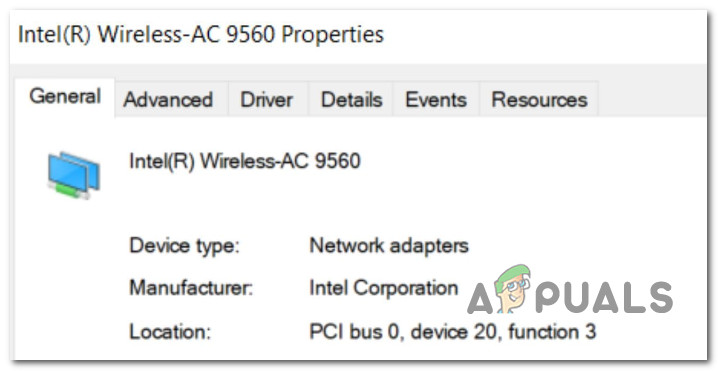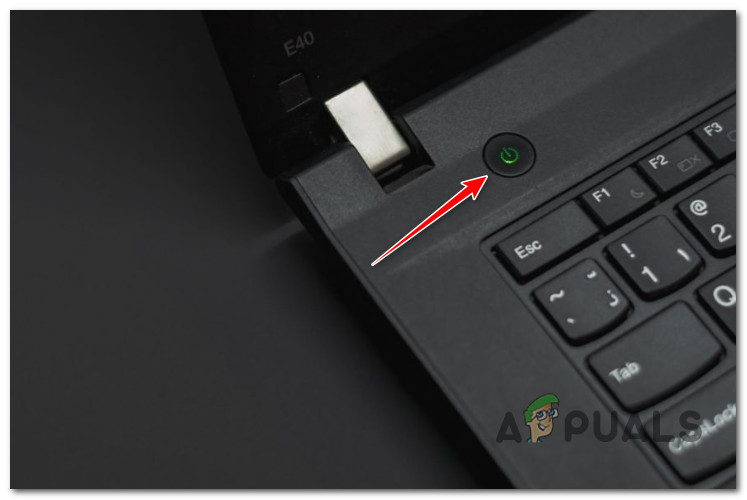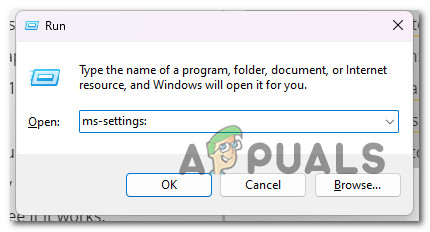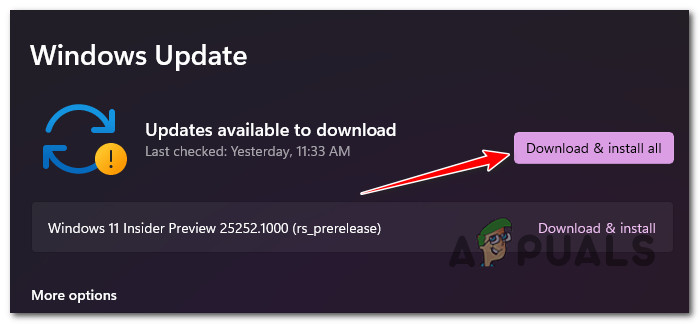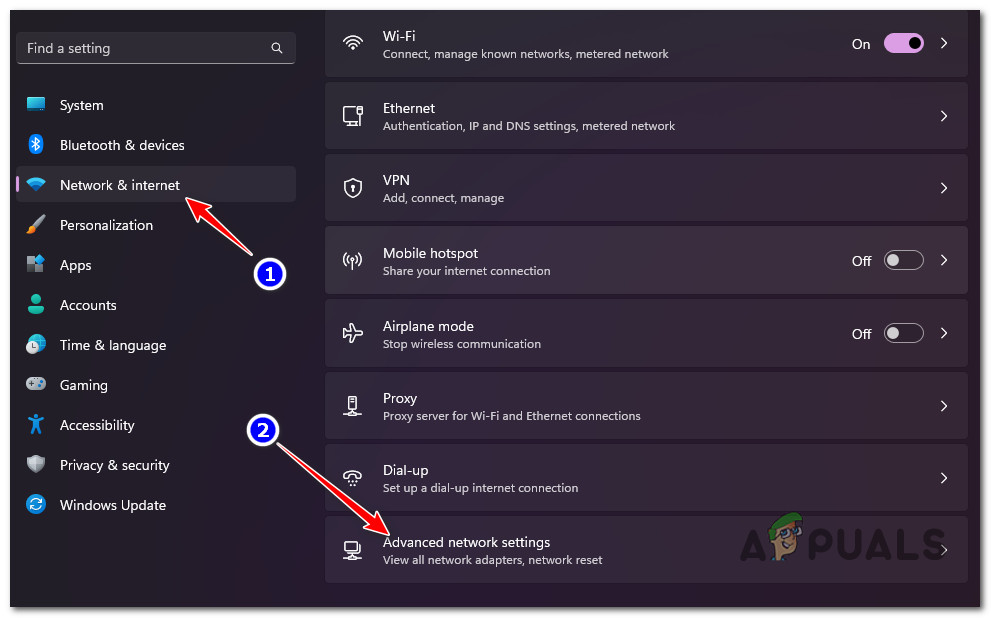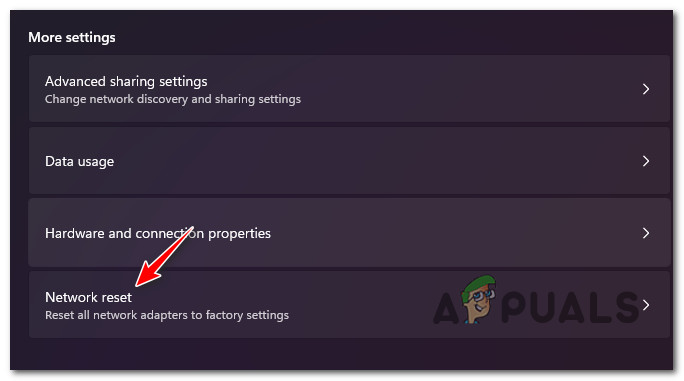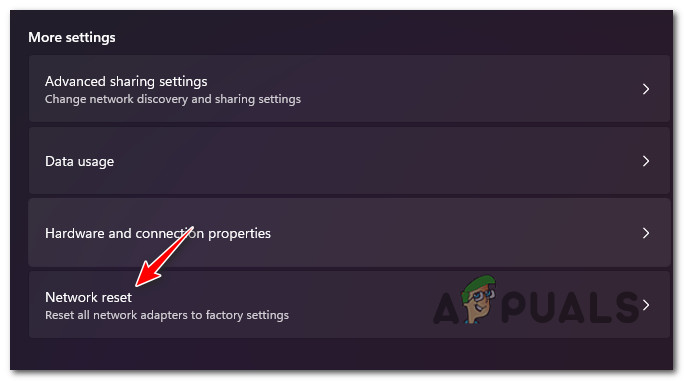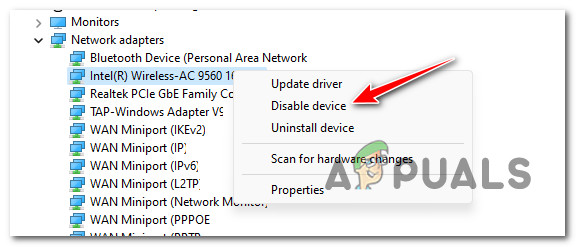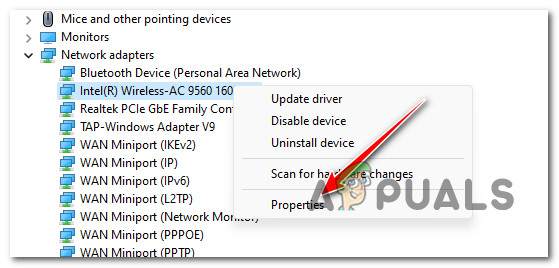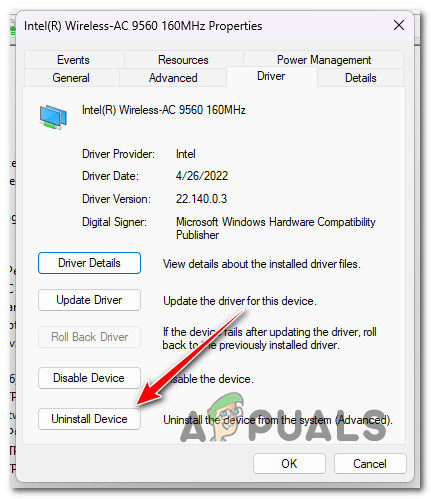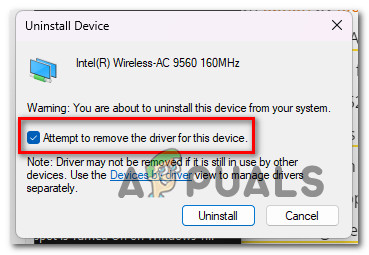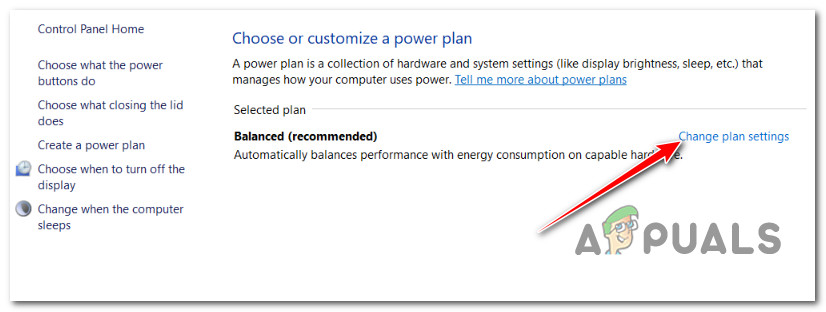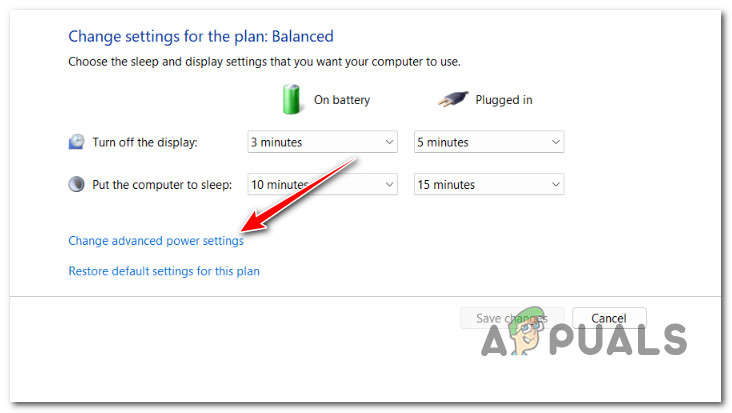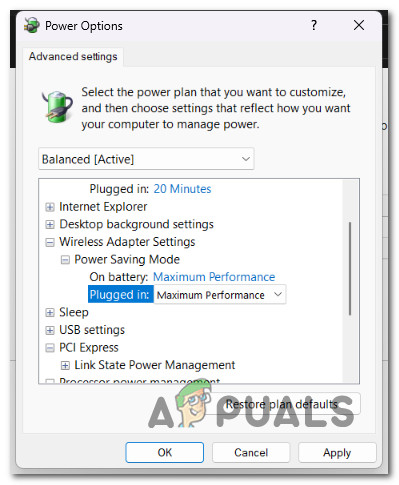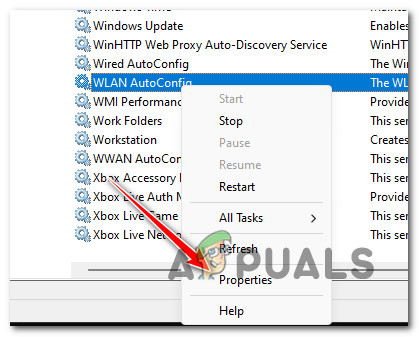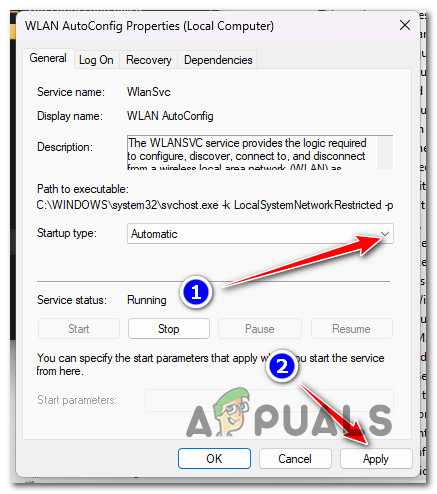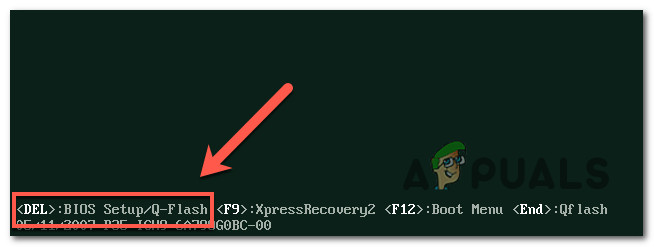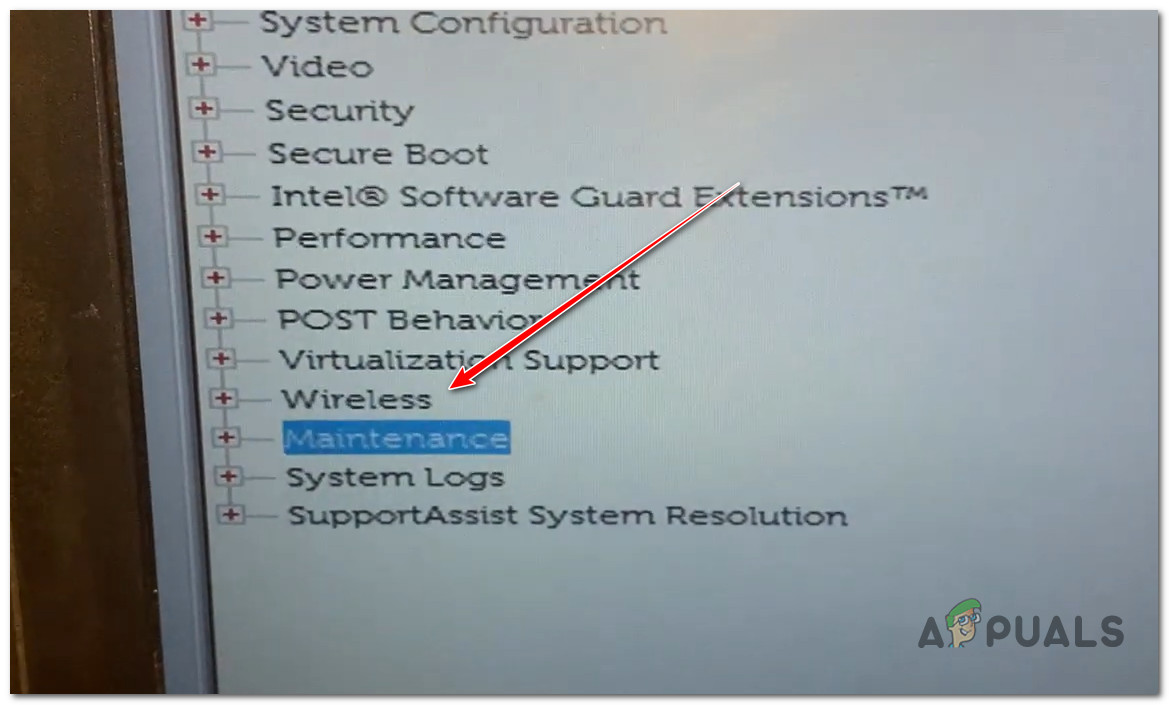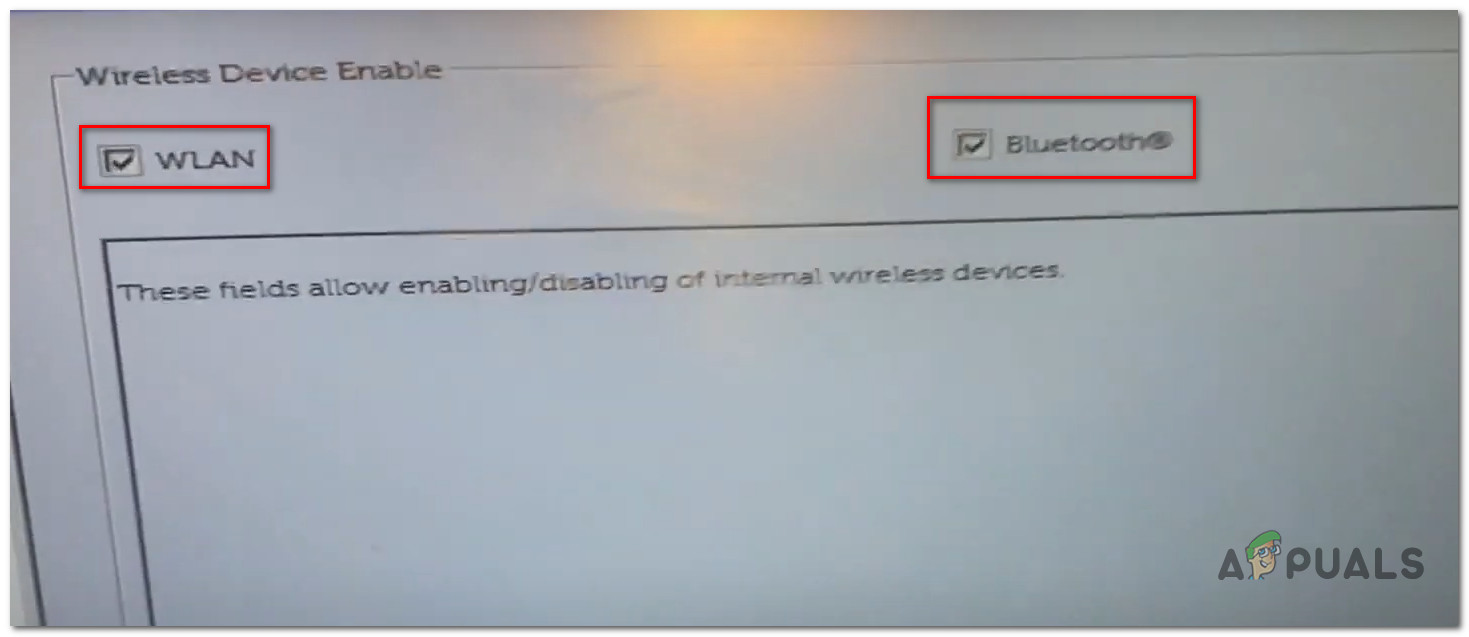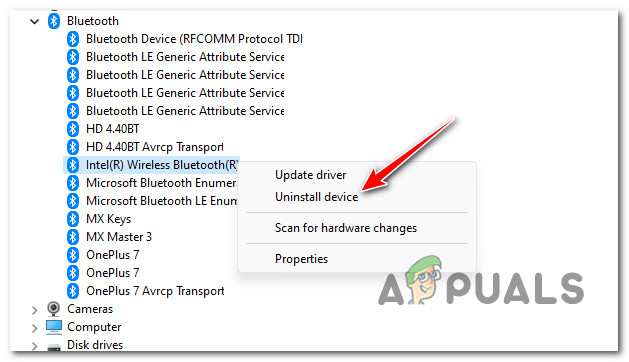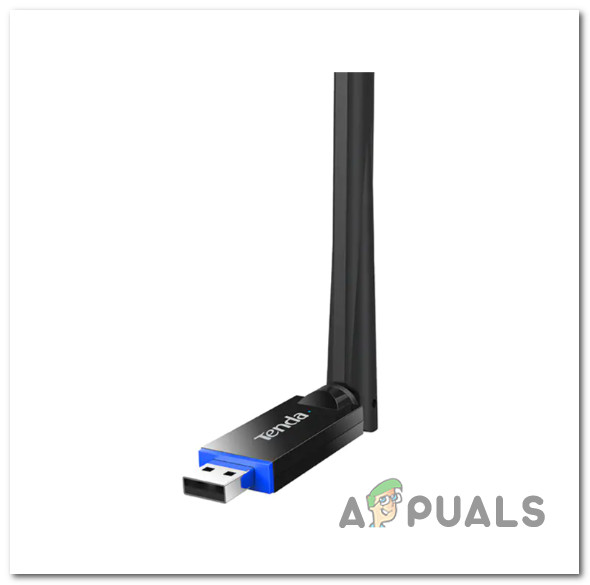There are a lot of potential causes that might cause this issue (directly or indirectly). A bad windows update or corrupted temporary files are at the top of this list. Other potential triggers include a network inconsistency, an inconsistent DNS, a power setting interrupting power to the network card, misconfigured WLAN AutoConfig driver, a corrupted or outdated WI-Fi Driver, and corrupted Bluetooth drivers. Update: This error can also occur due to a BIOS or UEFI setting that prevents Wireless devices from communicating. Here’s a list of methods that other users have used to fix the ‘Error code-10’ with the Intel Wireless AC 9560 driver:
1. Perform a hard shutdown
You should first perform a hard shutdown on your computer to troubleshoot the issue. Note: A hard shutdown will forcibly shut down your computer by interrupting power. This has the benefit of shutting down the PC without allowing it to cache any data that will be used during the next startup. As it’s been confirmed by other users experiencing the ‘Error code-10’ with the Intel Wireless AC 9560 driver, this easy fix might restore your Wi-Fi access. To perform a hard shutdown, press and hold on to the power key (on your PC or laptop) and keep it pressed until you physically cut power to your computer. Once the power has been interrupted, remove the AC power adapter and battery (if applicable) from your PC or laptop.
2. Update Windows to the latest version
If the hard reset procedure above didn’t work for you, the next thing you should do is troubleshoot against a Windows update issue. In the past, there was a surge of the ‘Error code-10’ after Microsoft released a feature update to Windows 10 that messed up the Intel Wireless AC 9560 driver. Fortunately, Microsoft is usually very fast when it comes to fixing problems they cause indirectly. If you’re lucky, a new hotfix might be already available. Test this scenario by connecting to the Internet via an ethernet cable and follow the instructions below to ensure that every pending update is installed: If the Intel Wireless AC 9560 driver from Intel is still not working, it should move down to the next method below.
3. Perform a network Reset, WinSock Rest, and Flush DNS
If you have tried all the suggestions above and can still not connect to a Wi-Fi network, the problem is likely due to some network inconsistency. We advise running a flush DNS cache reboot, a WinSock Reset, and finally, a network reset to ensure that you address both a router-based and a DNS-based issue. After completing these three steps, run a network reset to restore all network adapters to their factory settings. Note: Resetting Winsock will undo any configurations you’ve made to the Windows Winsock Catalog. After a reset, the wsock32 DLL file is restored to its original state, allowing programs to connect to TCP/IP communication from scratch. By flushing DNS, any IP addresses or other DNS entries will be eliminated from your cache. A network reset will effectively clear any temporary data accumulated from exchanging data pallets. To complete all of the above procedures, follow these steps: If you’re still experiencing the same issue with the Intel Wireless AC 9560 driver, move down to the next method below.
4. Restart Network Adapter
Another reason you can expect to deal with the Intel Wireless AC 9560 error is a scenario where the main adapter driver is stuck in a limbo state (it’s neither open nor closed). If this scenario is applicable, you can fix the issue by accessing Device Manager and restarting the main network adapter under the Network Adapters menu. For step-by-step instructions on how to do this, follow the instructions below: If the problem is still not fixed, move to the next method below.
5. Update Network Adapter
Make sure you’re using a network adapter that is entirely compatible with your Windows OS version if you’re still getting the same ‘Error code-10’ with your network driver. Note: You can upgrade it through Device Manager if it was transferred from a previous Windows version with an incompatible version. You must restart your computer after using Device Manager to remove the active network adapter driver to accomplish this. This way, you’ll force Windows 11 to acknowledge the lack of a network adapter driver. As a result, the next time your PC boots up, your OS will install a generic substitute that is completely compatible. For step-by-step directions on how to do this, refer to the list below: Scroll down to the next potential fix if you’re still getting the Intel Wireless AC 9560 issue.
6. Set Power Saving Mode to Maximum Performance
An unlikely culprit that is confirmed to trigger this issue is a power setting that ends up interrupting the power supply to your network card prematurely while it’s in idle mode and not exchanging data pallets. This scenario is most likely the cause of the issue if you notice that your ability to connect to Wi-Fi networks disappears when you’re not actively surfing the internet or performing online tasks on your PC. Fortunately, you can fix this issue easily by accessing your device’s Power Settings and modifying the current plan settings to Maximum Performance mode. Here’s a quick guide on how to do this: If you still have issues with the Intel Wireless AC 9560 driver, move down to the next method below.
7. Reconfigure behavior of WLAN Autoconfig
A missing service dependency might also be responsible for the sudden loss of connection caused by the disappearance of the Intel Wireless AC 9560 driver. The main service culprit that might be responsible for this behavior is WLAN AutoConfig. In this case, you should be able to fix the issue by accessing the Services screen and modifying the behavior of the WLAN AutoConfig service so that its startup type is set to Automatic. Follow the steps below for specific instructions on how to do this: If the same issue persists, move down to the next method below.
8. Download & Install the latest Wi-Fi Drivers from Intel
Windows 11 is far more reliant on a set of Intel firmware drivers. Similar statements can be made regarding Windows 10 but to a lesser extent. It’s not uncommon to see the ‘Error code-10’ with the Intel Wireless AC 9560 driver because you’re missing a key dependency. Since Windows update is not always capable of installing the dependencies of a driver, the best way is to do it manually. Launching the Intel Update Assistant and installing the pending driver updates is the easiest way. Here’s how to do this:
9. Enable Wireless Devices via BIOS or UEFI
Another reason you might experience this issue is a scenario in which wireless devices are disabled at a BIOS or UEFI level. This should not happen unless you specifically made this change, as wireless devices are enabled by default. Note: If wireless devices are disabled, none of the installed network adapters drivers and Bluetooth drivers will work properly. If you think this scenario might be applicable, follow the instructions below for specific instructions on making sure that wireless devices are enabled at a BIOS or UEFI level: If the problem is still not fixed, move to the next method below.
10. Uninstall the corresponding Bluetooth driver (if applicable)
Although this might seem unlikely, the Bluetooth driver currently in use might conflict with the Intel Wireless AC 9560 driver and cause the ‘Error code-10‘. As it turns out, a few versions of the Intel Wireless Bluetooth drivers might indirectly cause this problem. In this case, the solution is to uninstall and reboot your PC to allow your OS to find a generic replacement and install it automatically. For specific steps on how to do this, follow the steps below: If the problem is still not fixed, move to the next method below.
11. Reset BIOS / UEFI settings
Information currently stored in your BIOS or UEFI settings might also indirectly cause issues with the Intel Wireless AC 9560 driver. Suppose none of the above methods have allowed you to connect to Wi-Fi networks again. In that case, one simple way to fix the issue (if it’s caused by a BIOS or UEFI setting) is to effectively reset the BIOS / UEFI settings to their default values. Here’s a quick guide on how to do this:
12. Use an External Wi-Fi Adapter (if applicable)
If you have an external Wi-Fi adapter, plug it in and see if the connection is re-established. A hardware issue affecting your motherboard’s built-in WI-Fi receiver may be damage. In this case, your only option would be to use an external adapter. Update: Some users have confirmed that the built-in Wi-Fi receiver has started working even after they’ve unplugged the Wi-Fi adapter. If using an external Wi-Fi adapter is not an option, move to the final method below.
How to Connect Android to Wireless ADB for Wireless Screen MirroringWhat is Difference Between Wireless Router and Wireless Access Point?Fix: Xbox One Wireless Adapter not WorkingFIX: Wireless Mouse Not Working
